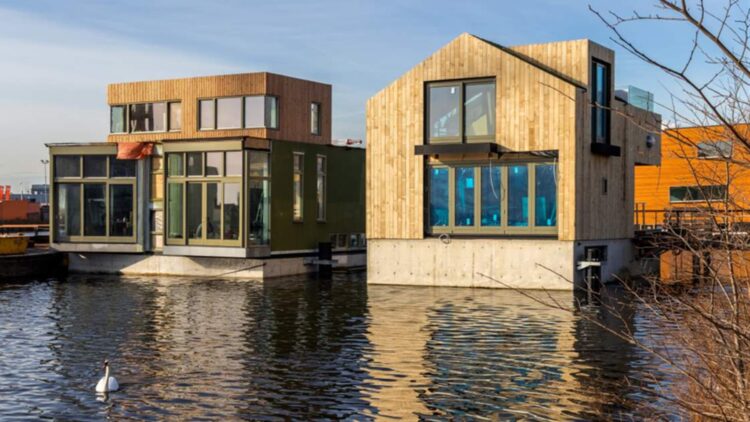The Netherlands is pioneering floating architecture to address the growing threat of flooding and rising sea levels. Instead of constructing higher barriers, the country has embraced adaptive housing designs, creating homes that can rise and fall with water levels. This innovative approach is supported by the Climate-ADAPT report from the European Environment Agency, which highlights the effectiveness of floating and amphibious homes in flood situations.
A practical demonstration of this concept occurred during the significant flooding of the Maas River in 2011. As water levels surged, homes in the area rose seamlessly with the floodwaters and returned to their original positions without sustaining damage. Today, this vision is manifesting in projects such as the floating neighborhood of Schoonschip in Amsterdam and over 200 homes developed by the architectural firm Waterstudio.
Adapting to Water, Not Fighting It
The Netherlands has long been a leader in water management, with nearly two-thirds of its land under threat of flooding without an extensive network of dikes. This reality has prompted architects and engineers to rethink traditional housing solutions. The design philosophy behind amphibious houses aims to facilitate movement with the water rather than resist it. These structures are anchored to the land but can also move vertically along guide posts as water levels rise.
According to the Climate-ADAPT database from the European Environment Agency, these floating and amphibious structures are highly effective in mitigating flood risks. The successful response of homes during the 2011 flood illustrated the viability of this adaptive architecture.
Why the Netherlands Leads in Floating Housing
Several factors position the Netherlands as an ideal testing ground for floating homes.
First, the demographic pressure in densely populated cities makes land a limited and costly resource. Utilizing waterways for residential development offers a practical solution.
Second, the country’s rich heritage in water engineering provides the necessary expertise to design and implement complex architectural adaptations.
Finally, the global urgency surrounding climate change has increased the demand for housing solutions that prioritize adaptability over mere resilience.
While the advantages of floating homes are clear—offering flexibility, flood adaptability, and efficient land use—the global expansion of this concept faces significant challenges.
Key issues include the need for enhanced connectivity to essential services like public utilities and sewage systems, which are more complex for floating structures. Additionally, existing building regulations primarily cater to fixed land-based properties, necessitating updates to accommodate these innovative designs.
Exporting the Dutch model also raises questions about construction costs, local regulatory adaptation, and potential impacts on aquatic ecosystems.
As discussions at COP30 in Brazil continue, adaptation strategies remain a focal point in addressing the climate crisis. The Dutch model of floating homes emerges as a hopeful vision for a future that must learn to coexist with water rather than resist it.
